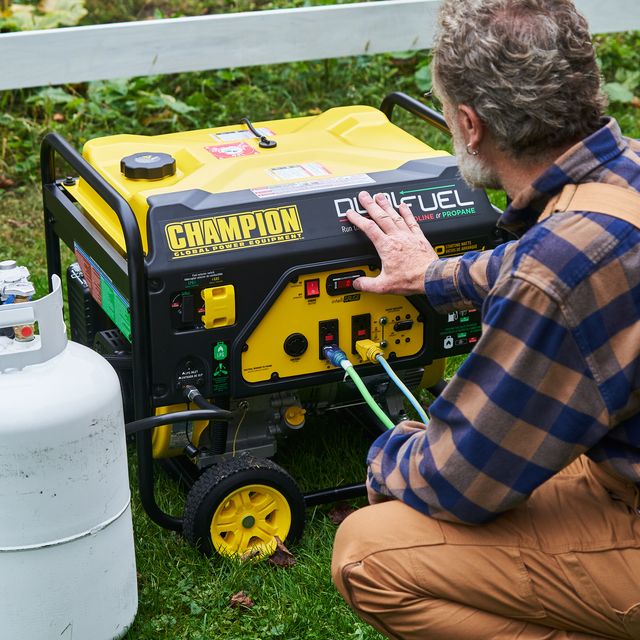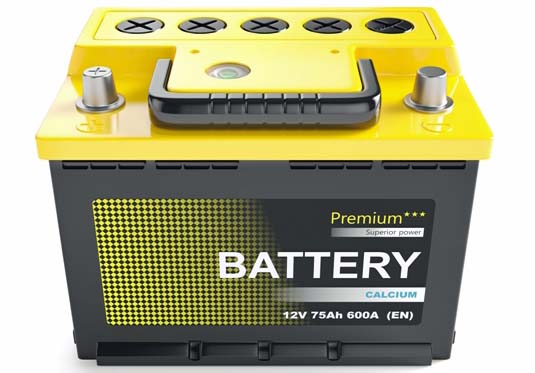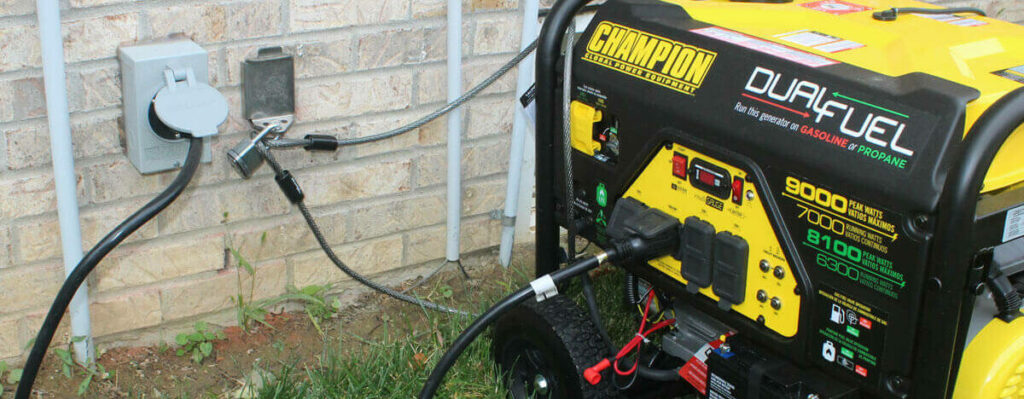One of the many reasons your generator does not start can be a dead battery. Like a car battery, your generator battery needs to be charged from time to time to stay in good condition. As a rule, you should charge the battery each time you consume a quarter of its capacity.
In this article, we will discuss how to charge the generator battery. We will see why it is important, how you can charge the battery, what options you have for battery chargers, and most importantly, some tips to make sure your generator battery always remains in the best running condition. Without much ado, let’s hit straight to our topic.
Why Is It Important to Charge a Generator Battery?
 A battery is an integral part of your generator. It is often the most common cause of your generator failure.
A battery is an integral part of your generator. It is often the most common cause of your generator failure.
The main purpose of a battery in any generator is to provide it with the power to start. Though each type of generator has its configuration commonly, a battery not only provides it with a starting power but also:
- Powers its digital control panel
- Powers the small motors in the generator called the ancillary panes.
- Provide backup power to any secondary battery set
- Powers the automatic lever and vents
Types of Generator Batteries
Commercial generators use different types of batteries. A couple of them are listed below.
- Maintenance Free Batteries: These batteries have sealed electrolytes and cannot create fumes outside the battery like conventional batteries. These are modern batteries and last many years, but even these batteries need to be charged if not working properly.
- Conventional Batteries: These have individual cells for filling and testing electrolytes
Both kinds of batteries need to be charged and maintained to ensure the generator starts on demand. Most of the modern generators come with an installed charger to keep your battery running smoothly. However, some older units still need an automatic battery charger that can be used to charge batteries when their voltage drops below the minimum.
Here are a few ways to charge a generator battery.
Battery With a Build-in Charging System
For generators that come with a manual charging system, you may need to activate the battery charger. These manual chargers have to turn off after completely charging the battery.
The generator with an automatic charging system charges the battery on-demand, without manual intervention. These battery chargers have an automatic shutoff system that stops them from charging when the battery is fully charged. Their maintenance is much easier and requires less manual work.
For old-school traditional batteries, you may require a battery charger or trickle charger. Both are used to provide a current to your batteries and work slightly differently.
How to Tell When the Batteries Need to Be Charged?
All batteries lose their strength with time if not charged regularly. Even when you don’t use your generator regularly, you should charge its battery periodically.
To know when your battery needs a recharge, you can use a digital voltmeter. It’s used to measure the voltage of the battery. If your battery measures below 12.4V, it needs to be recharged. You should check the voltage after a few months to prevent the battery from getting dead completely.
What Types of Chargers Can Be Used?
To charge the generator battery, you need a battery charger. These are easily available, and one should always have them if your generator does not come with a charging capacity. The batteries can be dead even when left unused for a long time, and extremely cold conditions can also affect their performance.
Three types of battery chargers can be used to power up your generators.
Regular Battery Charger
 A regular battery charger is used to charge the battery quickly. It sends the voltage to the battery until turned off. A point to note here is that a quick recharge shortens the life of a battery. If you are charging the battery too fast, it can damage it, reducing its performance. Also, you need to be careful to turn off the charger once the battery is fully charged.
A regular battery charger is used to charge the battery quickly. It sends the voltage to the battery until turned off. A point to note here is that a quick recharge shortens the life of a battery. If you are charging the battery too fast, it can damage it, reducing its performance. Also, you need to be careful to turn off the charger once the battery is fully charged.
Trickle Charger
A trickle charger charges the battery at a very low voltage. It takes longer to charge, but it does so safely. A trickle charger feeds the battery with a slow current, and this should also be disconnected once the battery is fully charged.
Maintenance Charger
This type of charger is a smart charger that stays connected with the battery. It eliminates the manual intervention and charges the battery whenever its voltage drops. You can leave it with your generator battery unattended, and it turns on automatically when your battery needs a charge. It is safer this way as the battery is not overcharged and thus increases the lifespan of the generator battery.
How to Charge Your Generator Battery (Step-by-Step)
To charge the battery with a charger, follow these simple steps.
- Squeeze the clip and open the jaw of the battery charger cable
- Connect the red or positive cable of the charger to the positive terminal of the battery make sure it is attached properly
- Connect the negative cable, a black one, with the negative terminal
- Turn on the voltage adjustment of the battery charger
- Turn the power switch of the charger on
- Watch the charger gauge to see how much battery is charged
- Remove the charger once the battery is fully charged
Does the Generator Charge Its Own Battery?
 Yes, some generators charge the battery while they are running, but you cannot rely on it if you are using the generator occasionally. The generator must run for a specific time to fully charge the battery, but it will not keep the battery charged if you are not using the generator for longer periods.
Yes, some generators charge the battery while they are running, but you cannot rely on it if you are using the generator occasionally. The generator must run for a specific time to fully charge the battery, but it will not keep the battery charged if you are not using the generator for longer periods.
Final Words
Even the low-maintenance generator batteries need to be changed occasionally. If you are not using the generator, the battery loses voltage due to discharge itself slowly. Whether your battery remain charged depends on factors like:
- Usage frequency
- Weather conditions
- Usage duration
- Battery age
Keeping your battery charged is essential for its life. If the battery is discharged past a certain point, it becomes completely dead, needing a replacement.